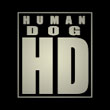I recall the first time major change came the juice box industry. 1988 had the appearance of a banner year in the boxed beverage world. Hi-C was still soaring high on the great sales of its Ghostbusters-themed green slime flavor and Capri-Sun's R&D department was making tremendous strides in juice bag technology, getting us to believe for the first time that a bag really was equal - and in many ways superior to - a box.
Then March arrived. And with it the annual Boxed Lunch and Portable Snacks Expo in Houston, TX - the then new "Metal Town American City" due to its reliance on tin foil sculptures and aluminum sheets instead of traditional plant-based landscaping in their parks (also the postal workers had been replaced by common kitchen appliances, but that didn't last but a few months).
There were whispers that the Nescafé people had something unusual to announce but no one put much weight on it. We just assumed they worked out the economics on spiral straw inclusion. Looking back, we weren't just unprepared. We were naive.
On a silent, all white stage a gray curtain bearing a simple Nescafé logo rose in front of an equally silent, packed audience of industry professionals, trend watchers and juice groupies.
There were audible gasps. A few threats and even rumors of one death in the ensuing stampede out to the pay phones. The Nescafé people had managed, against God and His science, to suspend sugary fruit juice in a perfect sphere. Its "skin" less than three microns thick and able to maintain integrity even when punctured by a straw.
Outrage doesn't begin to describe it. Storekeeps refused to stock it. Mothers refused to serve it. Even the sugarcane barons were resistant. They just couldn't see it. They couldn't see how the future fit into their world.
But the kids could. Their demand drove up the price 300% in the first 6 weeks. There was no stopping it. Every other juice box company introduced crudely-engineered knock-offs, many not surviving transit. Nescafé became the Apple computer, General Motors and Piggly Wiggly all rolled into one of its time.
And so today, that's why we Americans (and Malaysians) consume the majority of our food in liquified sphere form, in a confusing, inefficient, messy, horrible sort of zero-gravity dinner table ballet.
I recall the first time major change came the juice box industry. 1988 had the appearance of a banner year in the boxed beverage world. Hi-C was still soaring high on the great sales of its Ghostbusters-themed green slime flavor and Capri-Sun’s R&D department was making tremendous strides in juice bag technology, getting us to believe for the first time that a bag really was equal – and in many ways superior to – a box.
Then March arrived. And with it the annual Boxed Lunch and Portable Snacks Expo in Houston, TX – the then new “Metal Town American City” due to its reliance on tin foil sculptures and aluminum sheets instead of traditional plant-based landscaping in their parks (also the postal workers had been replaced by common kitchen appliances, but that didn’t last but a few months).
There were whispers that the Nescafé people had something unusual to announce but no one put much weight on it. We just assumed they worked out the economics on spiral straw inclusion. Looking back, we weren’t just unprepared. We were naive.
On a silent, all white stage a gray curtain bearing a simple Nescafé logo rose in front of an equally silent, packed audience of industry professionals, trend watchers and juice groupies.
There were audible gasps. A few threats and even rumors of one death in the ensuing stampede out to the pay phones. The Nescafé people had managed, against God and His science, to suspend sugary fruit juice in a perfect sphere. Its “skin” less than three microns thick and able to maintain integrity even when punctured by a straw.
Outrage doesn’t begin to describe it. Storekeeps refused to stock it. Mothers refused to serve it. Even the sugarcane barons were resistant. They just couldn’t see it. They couldn’t see how the future fit into their world.
But the kids could. Their demand drove up the price 300% in the first 6 weeks. There was no stopping it. Every other juice box company introduced crudely-engineered knock-offs, many not surviving transit. Nescafé became the Apple computer, General Motors and Piggly Wiggly all rolled into one of its time.
And so today, that’s why we Americans (and Malaysians) consume the majority of our food in liquified sphere form, in a confusing, inefficient, messy, horrible sort of zero-gravity dinner table ballet.



Add comment